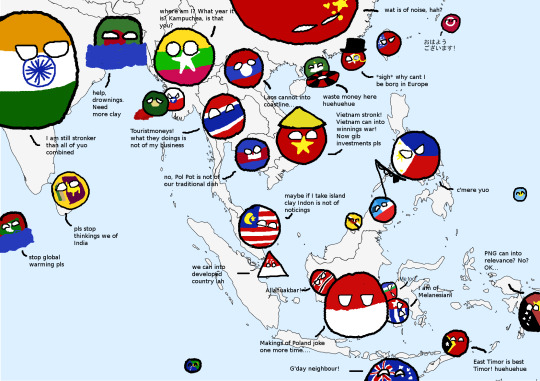Certified campus parking hater, This blog is used strictly for educational purposes only. No copyright infringement intended, MDA20009
Don't wanna be here? Send us removal request.
Text
Is the Social Credit System a way to instil good behaviour and provide safety to citizens? At what cost?
In the modern era of data-driven governance, China's social credit system is a revolutionary yet controversial model. A sophisticated amalgamation of technology and policy, it seeks to instil trustworthiness across its vast populace, simultaneously sparking intense debates around privacy and individual freedoms. This blog aims to dissect the complexities of this system, scrutinizing its broad implications and the intricate balancing act between ensuring societal stability and preserving personal liberties (Lee 2020).

https://www.google.com/url?sa=i&url=https%3A%2F%2Fwww.pinterest.com%2Fpin%2Fsocial-credit-meme-discover-more-interesting-bro-chinese-credit-social-memes-httpswwwidlememecomsocialcreditmeme7--974044225628225789%2F&psig=AOvVaw1dJSFzADR-5ZltrQF2eKmz&ust=1701187244695000&source=images&cd=vfe&opi=89978449&ved=0CBIQjRxqFwoTCJi4ob3G5IIDFQAAAAAdAAAAABAE
Understanding the Social Credit System
China's social credit system signifies more than a mere technological advance; it represents a fundamental societal shift. Orchestrated by major governmental bodies like the National Development and Reform Commission, the People's Bank of China, and the judicial system, it marks a significant move towards an integrated governance approach (Lee 2020).
Data collection forms the system's backbone, encompassing a range of sources from financial and criminal records to government data supplemented by third-party online platforms. The system also delves into more advanced data collection methods, including video surveillance and real-time data analysis (Canales & Mok 2022).
Introduced in 2014 with ambitions for nationwide implementation by 2020, the system extends its scope beyond financial credibility to touch upon various aspects of social interactions and judicial administration, painting a holistic picture of societal conduct and ethics (Canales & Mok 2022).
Promoting Good Behavior and Safety
The heart of this system is its unique scoring mechanism. Entities - individuals, businesses, and even government institutions - are subjected to meticulous evaluations that lead to real-life implications. High scores unlock a spectrum of rewards, symbolizing reliability and trustworthiness. Conversely, low scores trigger restrictions that can profoundly impact personal freedom, mobility, and operational capabilities in the business sector (Lee 2020).
For businesses, particularly financial institutions, the ramifications are significant. Compliance with financial regulations, labour rights, and environmental norms directly influences their operational latitude. In tandem, government entities are not exempt, with officials facing punitive measures for misconduct (Canales & Mok 2022).
The Cost of Surveillance
Despite its noble intentions, the system has yet to escape criticism. Concerns regarding privacy invasion, data inaccuracies, and potential government overreach evoke unsettling Orwellian parallels. Managing vast amounts of personal and corporate data underscores critical issues surrounding data integrity and security (Lee 2020). The system's demands on foreign businesses, particularly concerning large-scale data transfers, interject additional complexities against the backdrop of global geopolitical dynamics (Canales & Mok 2022).

Global Perspective
Globally, the social credit system has garnered attention and criticism, chiefly for its potential impact on human rights and personal freedoms. The Orwellian analogy drawn by numerous observers and human rights organizations highlights the international community's apprehension towards this ambitious yet seemingly intrusive system (Lee 2020).

Conclusion: Finding the Balance
As China continues to develop its social credit system, it finds itself at a crossroads, observed with a mix of respect and scepticism by the global audience. This initiative, symbolic of China's technology and governance aspirations, is a critical test in balancing public safety with personal freedom. The path China takes with its social credit system will be crucial in delineating the boundaries of state surveillance and the sanctity of individual rights.
As of 2019, the system has influenced millions through various restrictions and measures. Yet, the Chinese government staunchly defends the system, advocating its role in objectively assessing trustworthiness and fostering societal integrity. With a legal framework in the making, including a proposed draft law to define 'untrustworthy' behaviour, the system is poised to establish a legal foundation for its wide-ranging implementation. The unfolding journey of China's social credit system is set to be a defining chapter in the global discourse on the interplay of governance, technology, and human rights (Canales & Mok 2022).
References
Canales, K., & Mok, A. (2022, October 29). China’s “Social Credit” system ranks citizens and punishes them with throttled internet speeds and flight bans if the Communist Party deems them untrustworthy. Business Insider. https://www.businessinsider.com/china-social-credit-system-punishments-and-rewards-explained-2018-4
Lee, A. (2020, December 15). What is China’s Social Credit System and why is it controversial? South China Morning Post. https://www.scmp.com/economy/china-economy/article/3096090/what-chinas-social-credit-system-and-why-it-controversial
1 note
·
View note
Text
The Digital Frontline: Ukraine's Crowdsourcing Revolution in Warfare
In an era marked by digital transformation, Ukraine's response to Russian aggression showcases an extraordinary use of crowdsourcing in warfare. This blog post explores Ukraine's innovative approach, which leverages digital platforms to mobilize public action, document war crimes, and counter disinformation, thereby redefining the contours of modern warfare and justice.

The Rise of "e-Enemy" and Digital Witnessing
Central to Ukraine's digital arsenal is the "e-Enemy" chatbot, a brainchild of the country's Digital Ministry. This platform empowers citizens to report Russian troop movements and war crimes. Each smartphone becomes a digital witness as users upload time-stamped, geo-tagged footage, ensuring accurate documentation of enemy actions. This system of digital witnessing has turned ordinary citizens into crucial contributors to Ukraine's defense mechanism (Bergengruen 2022) (Lawler 2023).
Background:
President Volodymyr Zelensky's 2019 election was predicated on digitizing the state, culminating in the Diia app (Lawler 2023).
Diia, used by 19 million Ukrainians, facilitates digital ID access and government services, streamlining administrative processes and reducing corruption (Lawler 2023).
Adaptation During War:
Diia's features expanded to meet wartime needs with the onset of war, including evacuation assistance and property damage reporting (Lawler 2023).
The "e-Enemy" feature on Diia enables users to report Russian military movements, enhancing the military's situational awareness (Lawler 2023).
Crowdsourcing in Ukraine: A Community's Digital Armor
Ukraine's crowdsourcing strategy extends beyond the battlefield. By engaging the community in data collection, Ukraine has fostered a sense of unity and purpose among its populace. This collective effort goes beyond data accumulation; it moves towards transparency and participatory defence. Citizens document Russian offences, creating a vast archive of digital evidence. This democratizes information gathering and ensures clarity in the chaos of war (Bergengruen 2022).
The scale and systematic nature of Ukraine's efforts stand out. Over 253,000 reports of Russian military activities have been submitted via "e-Enemy", with more than 66,000 instances of property damage catalogued (Bergengruen 2022).
These reports feed into a centralized database at Ukraine's Prosecutor General's Office, categorizing war crimes and human rights violations (Bergengruen 2022).

Beyond Documentation: Tackling Misinformation
Ukraine's crowdsourcing initiatives are crucial in countering disinformation in the information warfare accompanying the physical conflict. These digital tools debunk false narratives by providing a channel for real-time, verified updates. Thus, crowdsourcing becomes not just a tool for evidence gathering but also a means to uphold truth (Bergengruen 2022) (Druziuk 2022).
Ukraine's documentation serves two purposes: providing evidence against Russian war crimes and countering Kremlin disinformation. This digital archive will be vital in preserving the factual narrative of the war (Druziuk 2022).
Legal Frontiers: Crowdsourcing and International Law
Ukraine's digital evidence collection could revolutionize international law. The array of user-submitted content – images, videos, eyewitness accounts – is building a solid case for war crimes tribunals. This innovative approach may set a new precedent in international law, recognizing the significance of open-source intelligence and citizen journalism in legal proceedings. The challenge lies in the digital nature of evidence and its admissibility under international law standards. Thus, Ukraine's efforts are to adapt and influence international legal practices. This digital mobilization raises critical questions about the traditional distinction between civilians and combatants. When civilians use technology like smartphones to aid military efforts, they potentially become active participants in military operations. This involvement could blur the lines between civilian and combatant roles, a distinction fundamental to international humanitarian law, as established by the Geneva Conventions and other legal frameworks (Bergengruen 2022) (Druziuk 2022) (Olejnik 2022).
Conclusion: Crowdsourcing as Ukraine's Beacon of Hope
In these times of adversity, Ukraine's embrace of crowdsourcing stands as a beacon of resilience and innovation, exemplifying the transformative power of technology in the realms of justice, unity, and truth. The nation's pioneering use of digital tools in warfare serves as a learning model for the global community, offering valuable insights into integrating technology in conflict resolution. Moreover, Ukraine's approach underscores the urgent need for clarity in applying international laws in this rapidly evolving digital age. As personal technology continues to reshape the battlefield, the international community must address and adapt to these challenges, ensuring that the principles of justice and sovereignty are upheld in the face of technological advancements. Thus, Ukraine's journey highlights the nation's steadfast spirit in the face of conflict and marks a significant shift in modern warfare and international law (Olejnik 2022).

https://www.reddit.com/r/ukraine/comments/xpi78b/this_was_uploaded_online_with_the_caption_we_are/?utm_source=share&utm_medium=web2x&context=3
Reflective Closing
The unfolding story of Ukraine's digital defence prompts a broader reflection on the role of technology in conflicts. Ukraine's example offers lessons for the international community on leveraging technology for justice and conflict resolution. This narrative highlights Ukraine's creative approach to warfare and emphasizes the transformative power of technology in shaping geopolitical realities. It's a testament to the enduring spirit of the Ukrainian people and their steadfast pursuit of justice and sovereignty.
References
Bergengruen, V. (2022, April 18). How Ukraine is crowdsourcing digital evidence of war crimes. Time. https://time.com/6166781/ukraine-crowdsourcing-war-crimes/
Druziuk, Y. (2022, April 19). A citizen-like chatbot allows Ukrainians to report to the government when they spot Russian troops - here’s how it works. Business Insider. https://www.businessinsider.com/ukraine-military-e-enemy-telegram-app-2022-4
Lawler, D. (2023, May 26). Ukrainians use the same app to file taxes and track Russian troops - axios. AXIOS. https://www.axios.com/2023/05/26/ukraine-diia-app-fedorov-russian-troops
Olejnik, L. (2022, June 6). Smartphones blur the line between civilian and combatant. Wired. https://www.wired.com/story/smartphones-ukraine-civilian-combatant/
2 notes
·
View notes
Text
Navigating the Minefield of Fake News and Propaganda in Social Media Activism
In our digitized era, social media has become a pivotal tool for activists, enabling rapid information dissemination and support mobilization. However, this dynamic landscape is increasingly compromised by the proliferation of fake news and propaganda, posing substantial challenges and risks. This blog post delves into the impact of misinformation, highlighted by theories such as 5G causing COVID-19, the US anti-lockdown protests, and the politicized term 'Chinese virus' used by former President Trump.
The Double-Edged Sword of Social Media
Social media's role in modern activism is complex and multifaceted, serving as both a catalyst for change and a conduit for misinformation. The Arab Spring and the Black Lives Matter movement highlight this dichotomy, demonstrating social media's immense potential for driving social and political activities while exposing the risks of spreading falsehoods.
Black Lives Matter:
Origin on Social Media: The Black Lives Matter movement began with a simple Facebook post in response to George Zimmerman's acquittal in the shooting of Trayvon Martin. This digital expression of outrage quickly captured the public's mood and ignited a widespread movement (Maqbool 2020).
Global Expansion: The movement rapidly evolved from a hashtag into a worldwide phenomenon. It illustrates social media's power to amplify voices, foster community among disparate groups, and mobilize support across the globe. The decentralized nature of the movement, with no single leader or centralized structure, was mirrored and amplified in the digital realm, allowing diverse voices and chapters to contribute and participate in various ways (Maqbool 2020).
Engagement Beyond Traditional Activism: Social media enabled individuals from various backgrounds, many of whom had not previously felt connected to the cause, to engage with the movement. This broadened the movement's reach and impact, integrating new perspectives and supporters(Maqbool 2020).

The Arab Spring:
Initial Perceptions vs. Emerging Research: Initially heralded as the 'Facebook revolution', the Arab Spring sparked debates about the role of social media in political change. While initial media coverage focused on young protesters using smartphones to mobilize, later research suggests a more nuanced role (Brown et al. 2012).
Mobilization and Networking: In countries like Egypt, social media networks were instrumental in organizing core groups of activists. These platforms enabled the formation of networks crucial to the planning and executing of protests, serving as a medium for communication, coordination, and dissemination of ideas (Brown et al. 2012).
Freedom of Speech and Civic Engagement: Digital media allowed Arabs to exercise free speech and engage in civic matters. This role was particularly emphasized by civil society leaders, who highlighted the importance of social media in enabling discussions that were often stifled in other public forums (Brown et al. 2012).
Information Dissemination Beyond Regional Borders: Studies, like the one by the United States Institute of Peace, indicate that social media plays a significant role in broadcasting events to a global audience. This external communication was pivotal in drawing international attention and support, acting as a megaphone for worldwide awareness rather than a direct rallying tool within the region (Brown et al. 2012).

Fake News: A Growing Concern
The surge of fake news profoundly impacts digital activism. Notorious examples like the 5G-COVID-19 conspiracy theory have diverted attention from factual issues, undermining activist efforts. Contrary to the 'post-truth' narrative, most people don't intend to share false information; the rapid nature of social media often leads to insufficient critical evaluation (Rand & Pennycook 2021).
Propaganda in the Digital Age
Today's widespread social media propaganda influences politics, news, entertainment, and education. Understanding and educating about propaganda is crucial for developing critical thinking and intellectual curiosity (Anderson 2021).
Navigating Propaganda:
Prevalence Across Platforms: Propaganda manifests in various forms, including memes and sponsored content (Anderson 2021).
Emotional Appeal and Simplification: This is especially effective in an information-saturated age, often circumventing critical thinking (Anderson 2021).

Impact on Activists and Protesters
Activists are challenged to navigate through misinformation. The spread of fake news can de-legitimize genuine movements and incite real-world consequences. The evolution of trends like Black Lives Matter and #MeToo underscores the power and risks of digital activism (Alexander 2020).
Combating Misinformation:
Individual Responsibility: Users should critically approach and verify information before sharing (Alexander 2020).
Diversifying News Sources: Following various news sources helps combat confirmation bias, ensuring a comprehensive understanding of events (Alexander 2020).
A Collective Responsibility
Addressing misinformation requires a collective effort. Innovative strategies like accuracy prompts on social media are proving effective. Social media platforms, civil society, and individuals each create an environment where truth prevails (Rand & Pennycook 2021).
Novel Approaches:
Accuracy Prompts: Simple methods like asking users to consider the accuracy of information can enhance the quality of shared content (Rand & Pennycook 2021).
Role of Platforms and Society: Social media companies and non-profits can employ targeted strategies to fight misinformation (Rand & Pennycook 2021).
Conclusion: A Call for Vigilance and Integrity
Looking forward, integrity and vigilance are essential in social media activism. Ensuring that accurate and credible information prevails is crucial for maintaining social media as an influential tool for advocacy and change. The future of social activism on these platforms hinges on our collective commitment to truth and combating misinformation.
References
Alexander, C. (2020, September 8). Alexander: Misinformation discredits social activism - the daily Utah Chronicle. The Daily Utah Chronicle. https://dailyutahchronicle.com/2020/09/11/alexander-misinformation-discredits-social-activism/
Anderson, J. (2021, March 4). Propaganda education for a Digital age. Harvard Graduate School of Education. https://www.gse.harvard.edu/ideas/edcast/21/03/propaganda-education-digital-age
Brown, H., Guskin, E., & Mitchell, A. (2012, November 28). The role of social media in the arab uprisings. Pew Research Center’s Journalism Project. https://www.pewresearch.org/journalism/2012/11/28/role-social-media-arab-uprisings/
Maqbool, A. (2020, July 9). Black lives matter: From Social Media Post to Global Movement. BBC News. https://www.bbc.com/news/world-us-canada-53273381
Rand, D., & Pennycook, G. (2021, March 22). Most people don’t actively seek to share fake news. Scientific American. https://www.scientificamerican.com/article/most-people-dont-actively-seek-to-share-fake-news/
0 notes
Text
Twitter's Censure of Donald Trump: Navigating Free Speech and Democracy in the Digital Age
In today's digital world, where social media platforms significantly influence political discourse, Twitter's decision to censure former President Donald Trump brings critical questions about free speech and democracy to the forefront. This blog post explores whether Twitter's actions were an infringement of free speech principles or a necessary step within democratic values.

The Escalating Conflict Between Trump and Social Media
President Trump has openly accused Twitter of infringing on his free speech. This accusation came after Twitter fact-checked his tweet about mail balloting and later restricted the visibility of another tweet related to the Minneapolis protests. Trump's long-standing tension with Silicon Valley tech giants escalated, culminating in a complex legal battle and concerns over the future of online free expression. The situation heated up when Twitter took action against his tweet for glorifying violence, prompting Trump to vow retaliation against the platform (Phillips 2020) (Romm & Timberg 2020).
Debunking Trump's Free Speech Violation Claims
However, Trump's claims of a constitutional free speech violation by Twitter don't hold up for two primary reasons:
Twitter's Status as a Private Company: The First Amendment protects against government censorship, not actions by private entities like Twitter. As a private platform, Twitter has the right to manage its content, including tweets from the president, under its own policies. This content management autonomy is safeguarded by the First Amendment (Phillips 2020).
Platform's Right to Content Regulation: Twitter can regulate its content as it sees fit, in line with its terms of service. If dissatisfied, users, including President Trump, can migrate to other platforms (Phillips 2020).

Trump's Countermeasures and Their Implications
The issue's complexity escalated when Trump signed an executive order to increase federal oversight of social media companies' content moderation practices. This legally questionable order suggests social media companies are exceeding legal boundaries in content regulation despite laws protecting them from liability. It has been criticized for potentially inviting government interference in private businesses, raising First Amendment concerns (Phillips 2020).
Silicon Valley in the Political Crosshairs
Trump's actions, perceived as a strategy to energize his base, exploit the tech industry's vulnerabilities, such as past failures in handling disinformation and privacy issues. This strategy has led to declining public trust in the tech sector, particularly among Republicans. It frames Silicon Valley as an electoral adversary(Romm & Timberg 2020).
Case Studies from Southeast Asia
Reflecting the global impact of social media in politics, various case studies from Southeast Asia highlight its influence:
Cambodia: Prime Minister Hun Sen's strategic use of social media during elections, including deleting his Facebook account to avoid suspension and shifting to platforms like Telegram and TikTok (Fitriani & Habib 2023).
Thailand: The Move Forward Party's general election success is partly attributed to leader Pita Limjaroenrat's effective use of Instagram (Fitriani & Habib 2023).
Indonesia: Expected trends in the upcoming presidential election include using political bots and buzzers, reflecting the adaptation to a young, tech-savvy demographic (Fitriani & Habib 2023).
Malaysia: The Parti Islam se-Malaysia (PAS) leveraged TikTok in its campaign strategy, significantly contributing to its general election success (Fitriani & Habib 2023).
Myanmar: The National Unity Government's (NUG) use of social media for public communication and awareness amidst criticisms of propaganda and misinformation (Fitriani & Habib 2023).

The Dilemma for Tech Companies
Tech companies now face the challenge of moderating content while fending off allegations of political bias. Trump's focus on alleged discrimination is part of his broader strategy to address perceived censorship, such as hosting a White House summit. The recent executive order could bring about significant changes in the digital landscape and raise questions about the government's role in regulating online speech (Romm & Timberg 2020).
Social Media's Role in Politics and Its Double-Edged Sword
Social media's importance in politics is underscored in Southeast Asia, where platforms are used extensively for political campaigns. While social media expands the reach of politicians beyond traditional media and allows for tailored messaging, it also raises issues like echo chambers, political polarization, and the spread of misinformation (Fitriani & Habib 2023).
Mitigating the Risks of Social Media in Politics
To counter these risks, educating the public about online misinformation is vital. Encouraging social media companies to actively remove false content and promote transparency in moderation policies is crucial for maintaining social media's integrity as a tool for democratic engagement (Fitriani & Habib 2023).
Conclusion
In conclusion, Twitter's censure of Donald Trump opens up a broader discussion about the responsibilities of social media platforms in public discourse. As we navigate these complex issues, the balance between protecting free speech and maintaining democratic values in the digital realm remains a topic of vital importance.
References
Fitriani, & Habib, M. (2023, August 10). Social Media and the fight for political influence in Southeast Asia. The Diplomat. https://thediplomat.com/2023/08/social-media-and-the-fight-for-political-influence-in-southeast-asia/
Phillips, A. (2020, May 29). Analysis | no, Twitter is not violating Trump’s freedom of speech. The Washington Post. https://www.washingtonpost.com/politics/2020/05/29/no-twitter-did-not-violate-trumps-freedom-speech/
Romm, T., & Timberg, C. (2020, May 29). Trump’s growing feud with Twitter fuels free-speech concerns. The Washington Post. https://www.washingtonpost.com/technology/2020/05/29/words-president-matter-trumps-growing-twitter-feud-fuels-free-speech-concerns/
1 note
·
View note
Text
Disclaimer !!!!
This blog is used strictly for education purposes only.

0 notes
Text
Is blogging still relevant in the age of TikToks and Instagram?
What is a Blog?
The term "blog" is a condensed version of its initial name, "weblog." These weblogs allowed pioneering internet users to chronicle their daily experiences in journal-like posts. As blogs frequently offer a commenting feature, their proliferation led to communities centred around popular ones (Duermyer, 2022).
Blogging encompasses activities such as writing, capturing photos, and sharing other forms of media online. Initially, it began as a platform for people to pen down journal-like posts. However, it has evolved and is commonly found on numerous business websites (Duermyer 2022).

TikTok & Instagram
TikTok is a platform designed for creating and disseminating brief videos. Unlike the square videos on Snapchat or Instagram stories, TikTok videos are vertically oriented. Users navigate these videos vertically, scrolling instead of swiping horizontally (Herrman 2019). The app offers many creative tools for video makers, such as filters reminiscent of those on Snapchat and the capability to incorporate soundtracks. Moreover, it promotes user interaction, urging them to create "response" videos or "duets", where they can replicate existing videos and insert their footage alongside the original (Herrman 2019).
Instagram is a widely used social media platform that shares images and videos. Since its inception in 2010, its continued relevance can be attributed to the introducing of fresh features like Instagram Stories, shopping functionalities, Instagram Reels, and several others (Moreau 2022). Instagram can be described as a streamlined version of Facebook, optimized for mobile usage and a more visual experience. Interaction on this platform involves following other users, gaining followers, commenting, liking, tagging, and engaging in private conversations. Additionally, users can save visuals they come across on Instagram (Moreau 2022).

Is Blogging Relevant?.....TLDR (yes)
In today's digital landscape, it is understandable for many to believe that extended written content has lost its significance. The rise of social media giants like TikTok, Facebook, and Instagram has simplified the distribution of bite-sized, primarily visual content to vast audiences (Luca 2022).
Regarding personal blogs, there is a decline in their allure. The days when individuals eagerly discussed their favourite bloggers are fading. It has become uncommon to encounter someone who blogs about their personal experiences ardently. Given the fast-paced lives of many individuals today, investing significant time in documenting personal narratives online seems less appealing (Luca 2022).
Nevertheless, when it comes to the commercial realm, blogging continues to thrive. People consistently turn to blogs as trusted sources to satiate their informational needs. A sound business blogging strategy can undoubtedly yield significant rewards for companies (Luca 2022).
Blogs compared to TikTok and Instagram
Blogs, long-standing content pillars, dominated the digital landscape well before the rise of modern social media platforms. They span a vast array of topics, from art to business, ensuring there is a blog for nearly every subject. However, with the surge of newer content formats, like Instagram reels and TikTok videos, doubts have yet to emerge regarding the current relevance of blogs (Sethi 2022).
However, akin to diamonds, blogs possess a timeless value. Their lasting impact contrasts with the fleeting nature of reels and TikTok videos. One key to their endurance is their discoverability via search engines, continually presenting relevant, albeit sometimes older, blog content to users. Moreover, blogs offer unparalleled versatility. They can be transformed into content for platforms like Facebook and LinkedIn or shared as guest articles. At the same time, reels and TikTok videos are confined mainly to their native platforms (Sethi 2022).
Blogs also offer depth and comprehensive information, accommodating short and long formats. At the same time, reels and TikTok are constrained by duration, typically prioritizing entertainment over extensive information. Additionally, while reels and TikTok cater mainly to entertainment-focused audiences, blogs can serve diverse purposes, whether informative, entertaining, or sales-driven. This adaptability extends to their format, as blogs can seamlessly integrate text, images, and videos, ensuring a more effective communication strategy. Lastly, while reels and TikTok cater predominantly to younger audiences within their specific platforms, blogs optimized for search engines can reach a broader demographic across the digital expanse (Sethi 2022).
Conclusion
In conclusion, while modern platforms like TikTok and Instagram have carved out their niches, primarily focusing on visual, bite-sized content that captivates younger audiences, the significance of blogs will always be. With Blogs rooted in the traditions of weblogs, blogs offer unparalleled depth, versatility, and enduring relevance. Their inherent nature of accommodating diverse content types, coupled with SEO optimization, enables them to cater to a broader audience spectrum. Despite the appeal of fleeting content types like reels, blogs' persistent and evolving value in personal and commercial domains underscores their timeless relevance in the vast digital realm. As the digital landscape morphs, blogs, with their deep-rooted foundations, serve as enduring beacons of information, entertainment, and business strategy.
(Unrelated) How I feel after trying to find parking on campus

Sources
Duermyer, R 2022, ‘What is blogging?’, The Balance, The Balance, viewed 2 October, 2023, <https://www.thebalancemoney.com/blogging-what-is-it-1794405>.
Herrman, J 2019, ‘How TikTok is rewriting the world’, The New York Times, The New York Times, viewed 2 October, 2023, <https://www.nytimes.com/2019/03/10/style/what-is-tik-tok.html>.
Luca, S 2023, ‘Why blogging is still worthwhile in 2023’, Reason, Reason, viewed 2 October, 2023, <https://www.reasonagency.co.nz/insights/why-blogging-is-still-worthwhile-in-2022#section1>.
Moreau, E 2022, ‘What is Instagram, and why should you be using it?’, Lifewire, Lifewire, viewed 2 October, 2023, <https://www.lifewire.com/what-is-instagram-3486316>.
Panorama, B the 2022, ‘6 reasons that make blogs remain relevant in the age of reels and TikTok’, Beyond The Panorama, Beyond The Panorama, viewed 2 October, 2023, <https://beyondthepanorama.com/6-reasons-that-make-blogs-remain-relevant-in-the-age-of-reels-and-tiktok/>.
1 note
·
View note